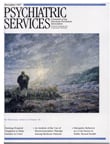Children in Distress: A Guide for Screening Children's Art
Clinicians who have frequently faced the problem of determining whether children have been traumatized when the children cannot or will not discuss their experiences will want to consider adding this book to their assessment repertoire. The book describes the development and use of two methods for rating children's drawings for indicators of potential traumatization: the "human figure drawing" and the "kinetic family drawing." Scoring sheets are included for each task. Clear instructions, accompanied by illustrative drawings of each element in the two systems, provide a lucid and readable guide for quickly learning how to apply the two rating systems to actual children's drawings.
Although both systems are based on empirical data, the authors consistently emphasize that ratings derived from them are to be used only as guides for further discussion with children and parents or guardians. They are not intended to be used for diagnostic purposes. This caution is well advised because even though the human figure drawing and the kinetic family drawing are based primarily on empirical data, more research is needed to determine the true extent of their validity, reliability, and applicability.
In fact, some elements of the scales are currently based only on clinical experience rather than on any empirical data. Thus, for example, the presence of unicorns in the human figure drawing is taken as a potential indicator of molestation. So are Xs used in the place of eyes. Even when elements have some empirical data to support their use as trauma indicators, these data may be scant. The authors report, for instance, that butterflies were found in 4.4 percent of drawings made by molested children versus less than .8 percent of drawings by all other children, and so they suggest that butterflies might be taken as a possible indicator.
These observations are not to deny the potential value of these two methods of rating children's drawings. Indeed, the systems delineated in Children in Distress show a good deal of promise. The authors have attempted to devise a predominantly objective method of rating children's drawings. Ratings are based on the presence or absence of certain elements, such as the explicit drawing of genitals or the concealment of genitals or the omission of genital regions altogether. Subjectivity is discouraged. The authors frequently emphasize the dangers of overinterpretation, and they continually note that the analysis of children's art must be placed within the context of the child's current life situation. These cautions are certainly a step forward in the area of rating children's drawings and are to be commended.
Children in Distress includes a short history of other approaches to rating children's drawings as well as a discussion of reliability and validity issues. Summary tables are provided, too, of the empirical data the authors have thus far accumulated on the presence or absence of each element in the rating scales among molested children, children referred to clinics for emotional problems, and children in the general population.
The two related systems of evaluating children's drawings presented here may be just what many child therapists need to help them begin to understand the traumatic experiences of children who are unwilling or unable to discuss their experiences in any other manner.
Dr. Fletcher is assistant professor of psychiatry and director of the behavior sciences research core at the University of Massachusetts Medical School.



